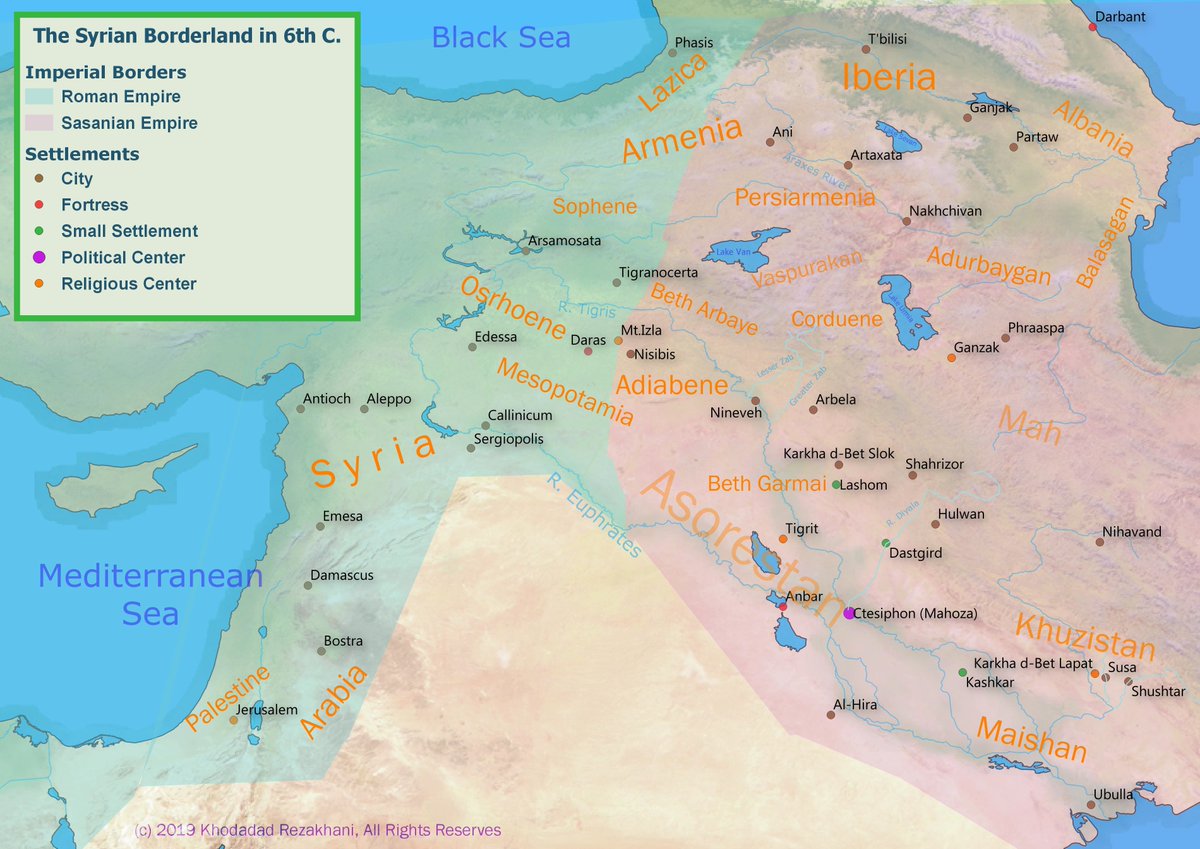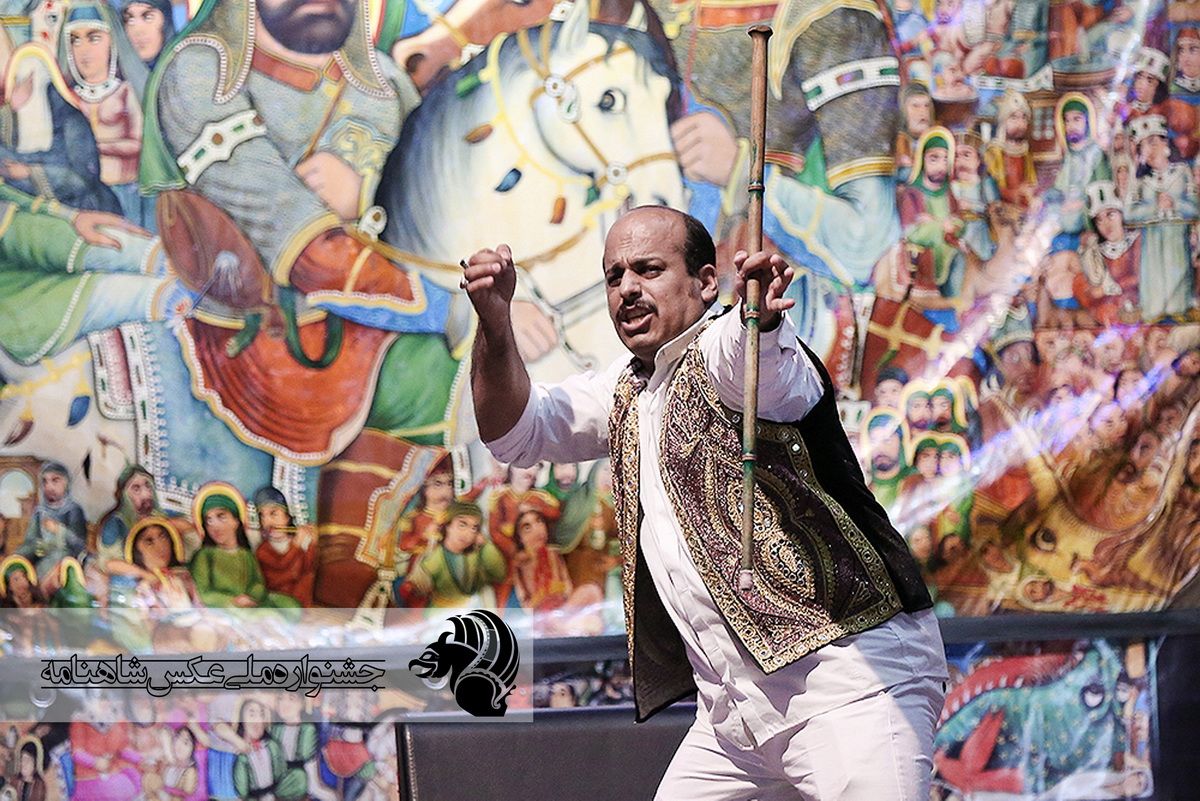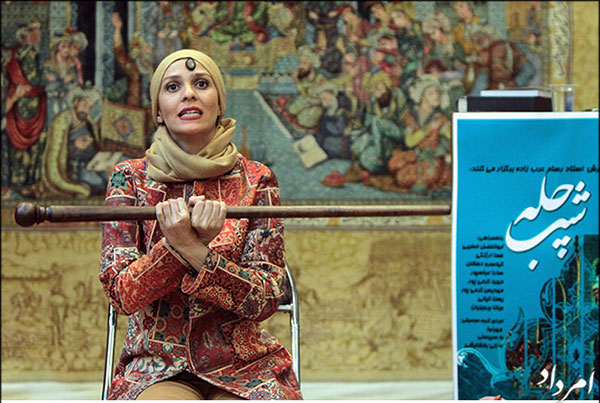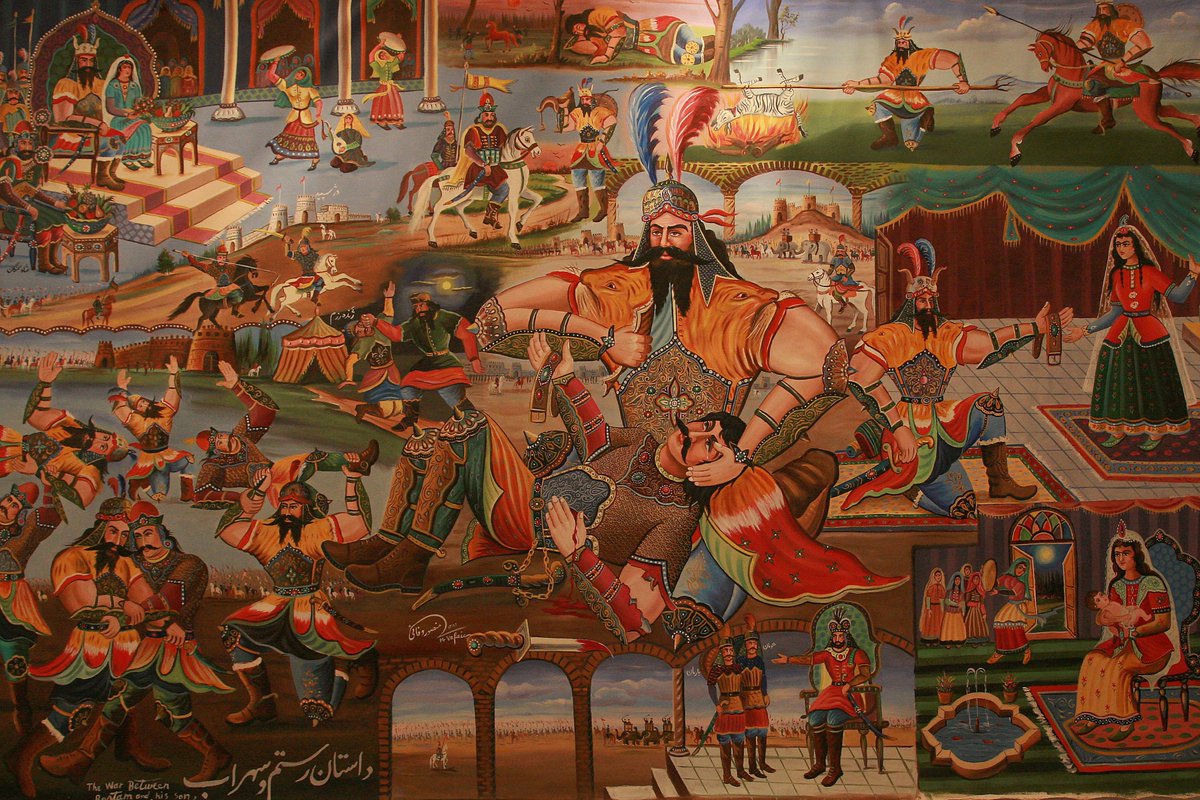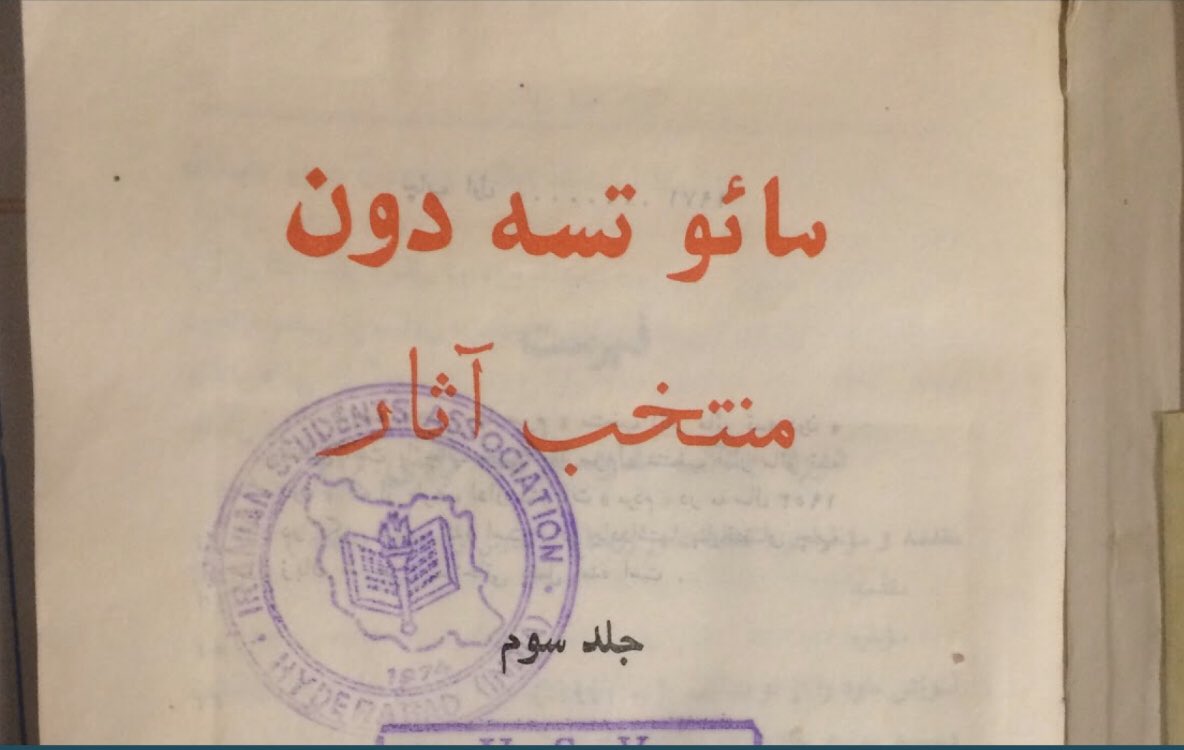
Ok, lets talk about Varakhsha, a town near #Bukhara that contained a painted palace and became the seat of the #Sogdian rulers of Bukhara from the Arab conquest (early 8th C) until the rise of the Samanids (late 9th C)
THREAD
~ NA @eranudturan #HistoryofIran



THREAD
~ NA @eranudturan #HistoryofIran
https://twitter.com/arakhnos/status/1237154657346166785



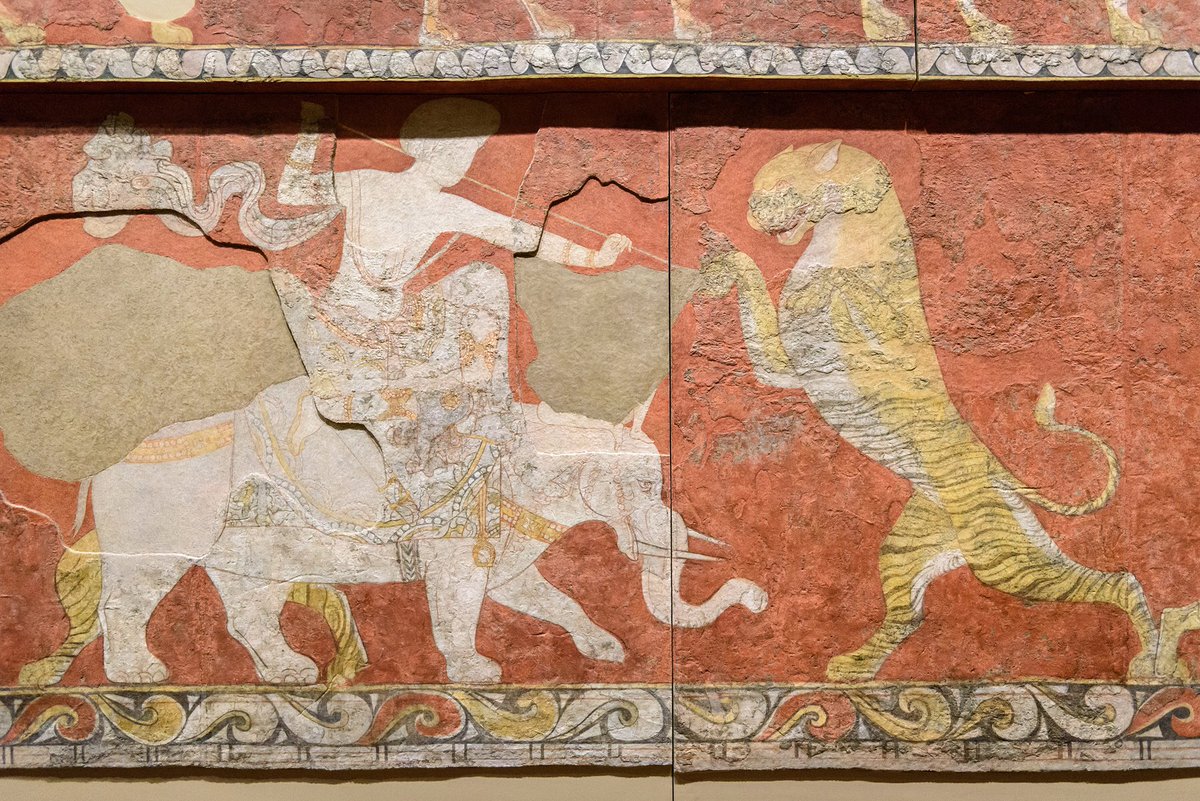
The palace was built probably in the late 7th Century, but the most famous paintings, the Red Hall, date from the early 8th C from the reign of Tughshada, the son of the famous Queen of #Bukhara, about whom I wrote here: patreon.com/posts/who-was-…
~ NA


~ NA



The Red Hall has a row of men in Indian attire, riding saddled elephants, fighting a series of beasts - leopards, tigers, and dragons. The same scene is repeated again over the length of the wall, with variations in whom the elephant rider is fighting against. ~NA 



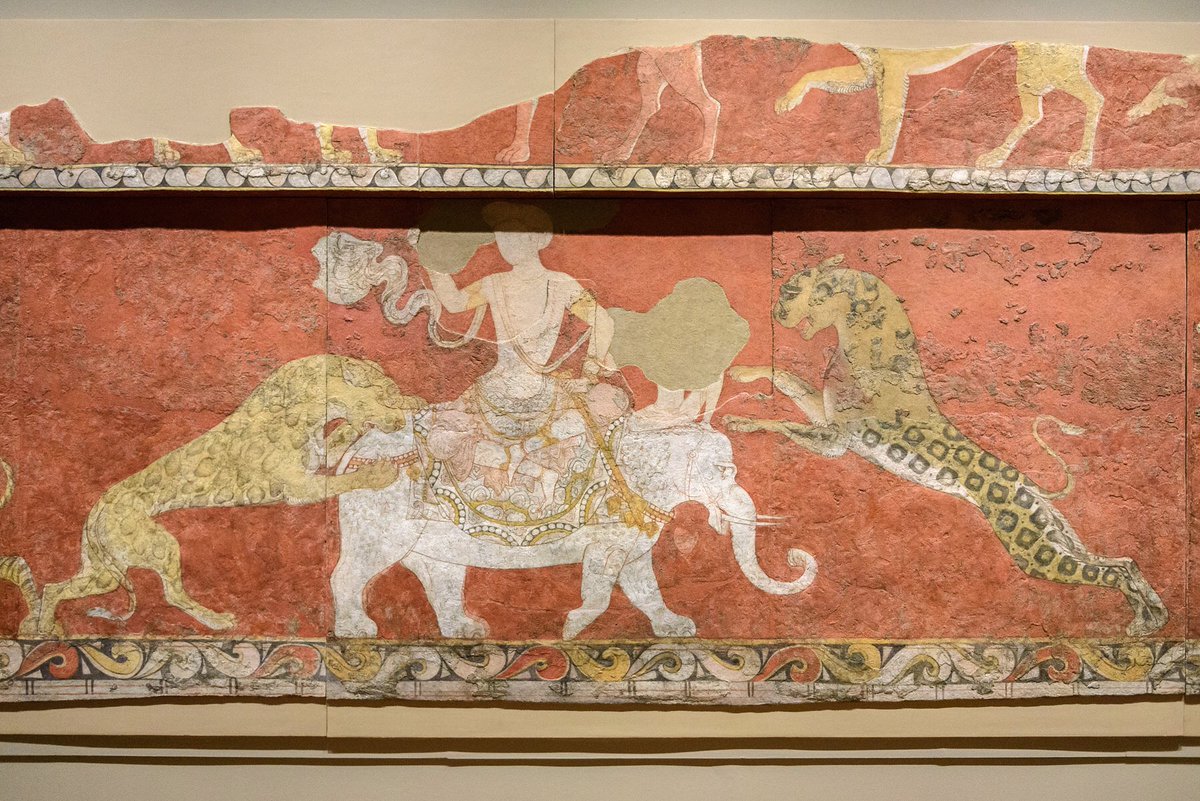

Repetition of the same scene is unusual for Sogdian art, which is usually narrative in nature, and usually shows different scenes from a story.
Additionally, we’re not even entirely sure who the elephant rider even is.
Additionally, we’re not even entirely sure who the elephant rider even is.
One way we can try to guess his ID is by his mount.
Deities in Sogdian art were depicted with Indian iconography and shown with symbols of their vihana - animal mount. The elephant was the mount for the Hindu god Indra, whose image was used for Adhvagh, Sogdian Ahura Mazda
~NA
Deities in Sogdian art were depicted with Indian iconography and shown with symbols of their vihana - animal mount. The elephant was the mount for the Hindu god Indra, whose image was used for Adhvagh, Sogdian Ahura Mazda
~NA
BUT: Indra-Adhvagh also has other attributes: a third eye, and a vajra. None of these are seen in Varakhsha. Compare with this painting from Dandan-Oiliq, 8th C, showing (left-to-right) the deities Adhvagh, Nana, and Weshparkar (no elephant)
~NA
~NA

Another guess: the Bodhisattva Samantabhadra, with iconography borrowed from Samantabhadra’s Chinese version, Puxian, who rides an elephant with 6 tusks, although the painter only drew one from the lower jaw. BUT fighting with animals marks the figure out as non-Buddhist ~NA 

The ruler of Bukhara, Tughshada, embraced Islam politically, but practiced the Sogdian religion in secret.
These paintings could be religious, but not obvious.
Enough that Tughshada knew what they meant, but the Arabs didn’t.
And that’s maybe why they’re so unusual.
~NA
These paintings could be religious, but not obvious.
Enough that Tughshada knew what they meant, but the Arabs didn’t.
And that’s maybe why they’re so unusual.
~NA
Nobody knows for sure who the elephant rider is.
He doesn’t really have any attributes of Adhvagh, and he’s definitely not a Bodhisattva.
But what if he’s not a deity, but just looks like one?
He doesn’t really have any attributes of Adhvagh, and he’s definitely not a Bodhisattva.
But what if he’s not a deity, but just looks like one?
One other theory IDs him as “The King of the South,” ruler of one of the 4 cardinal points, and paintings in other rooms may have had rulers of other points
The South was the cardinal point occupied by Sogdiana
East was for India, North for China and West for Iran
~NA
The South was the cardinal point occupied by Sogdiana
East was for India, North for China and West for Iran
~NA
Above the row of elephant riders are a series of animals, all saddled. These have been ID’d as vihanas for gods, which would have been obvious to the Sogdians, but to the Arabs, they were just animals wearing saddles. ~NA 





What if the elephant rider isn’t a deity, but the King of Bukhara himself, hunting beasts, under a sky filled with the Sogdian deities, all painted in a covert and unassuming fashion so the Arabs would have no idea what they were looking at?
Sadly, no one knows for certain.
~NA
Sadly, no one knows for certain.
~NA
The palace of Varakhsha was bought by the Samanid Amir Ismail Samani for the sum of 20,000 dirhams a year to the ruler of Bukhara, Abu Ishaq.
Ismail Samani was on a mission to make #Bukhara *his* city, and wanted to remove the influence of Abu Ishaq.
~NA
Ismail Samani was on a mission to make #Bukhara *his* city, and wanted to remove the influence of Abu Ishaq.
~NA
So what does he do?
He plans to build a Friday Mosque in Varakhsha, undermining the popularity of the Bukharan ruler and leaving *his* mark on the town.
~NA
He plans to build a Friday Mosque in Varakhsha, undermining the popularity of the Bukharan ruler and leaving *his* mark on the town.
~NA
The townsfolk weren’t too happy about this. Since pre-Islamic times, the palace had been the site of a 20-day long festival at the time of #Nowruz, and wanted to keep their traditions. Of course, they couldn’t tell Ismail Samani this, so they made up another excuse. ~NA
They tell him that the town was too small and unimportant for a Friday Mosque (It wasn’t)
But Ismail Samani listened. He must have sussed that building a Friday Mosque over the palace was too much, too soon.
Not this time, Ismail Samani.
Pics from: patreon.com/posts/28244149
~NA



But Ismail Samani listened. He must have sussed that building a Friday Mosque over the palace was too much, too soon.
Not this time, Ismail Samani.
Pics from: patreon.com/posts/28244149
~NA

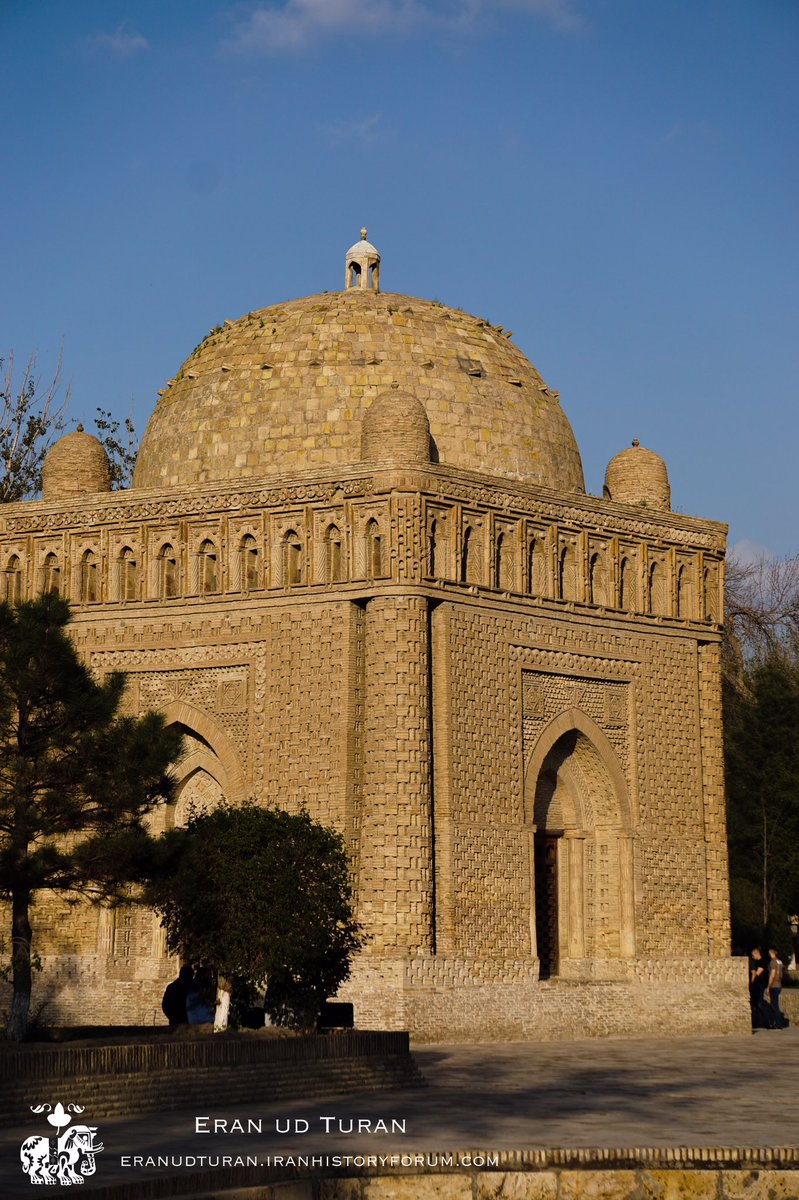


• • •
Missing some Tweet in this thread? You can try to
force a refresh





